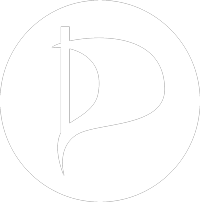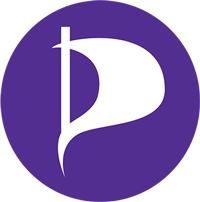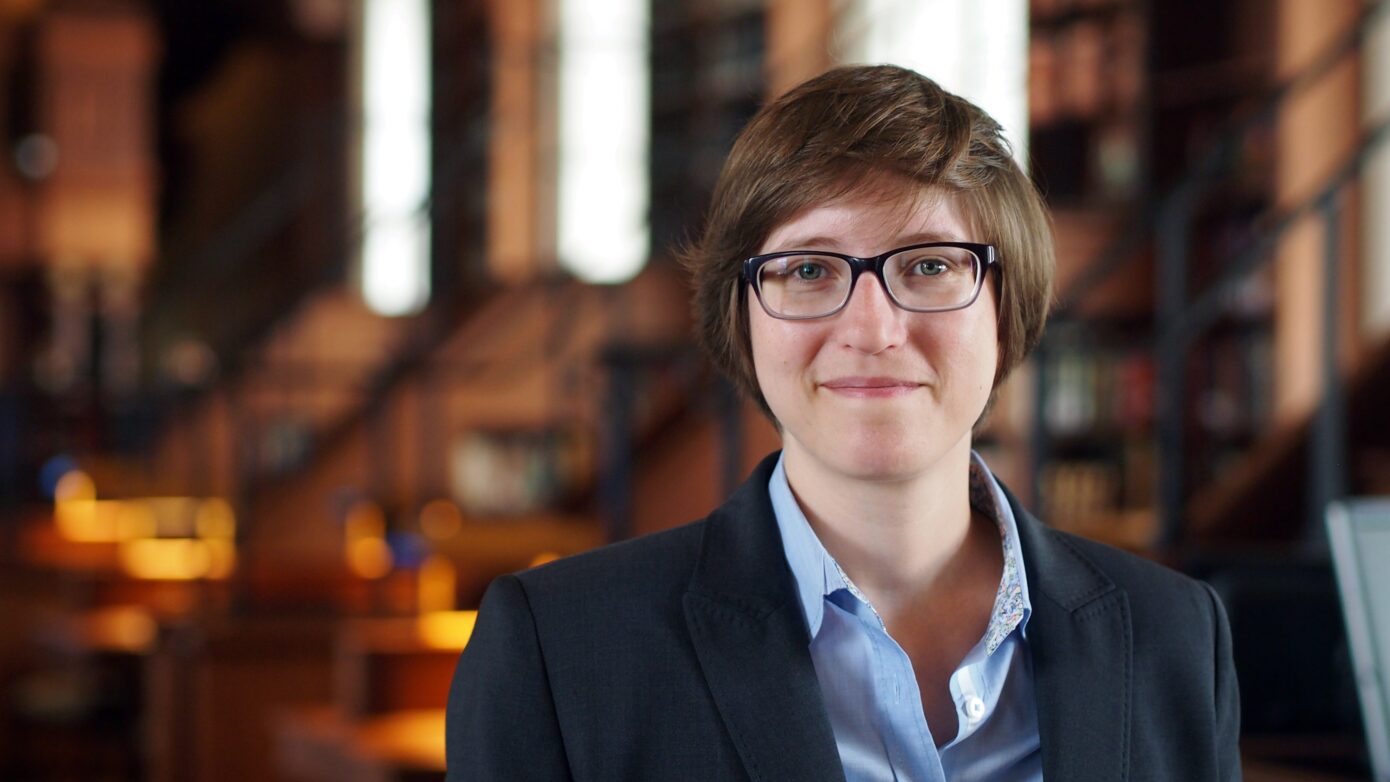Som ett led i den pågående amerikanska översynen av deras upphovsrättslag DMCA höll i veckan senatens kommitté för upphovsrätt hearings om upphovsrätt i andra länder. Två experter vittnade om det europeiska upphovsrättsdirektivet från 2019. Sällan har det gjorts så tydligt exakt hur vansinnigt upphovsrättsdirektivet faktiskt är.
Pamela Samuelson
>Pamela Samuelson är en av USA:s ledande experter på upphovsrätt. I sitt vittnesmål förklarade hon i detalj hur kompromisserna i upphovsrättsdirektivet gör det till en osammanhängande lag som ingen kan förstå hur den ska implementeras. Hela hennes vittnesmål kan läsas här.
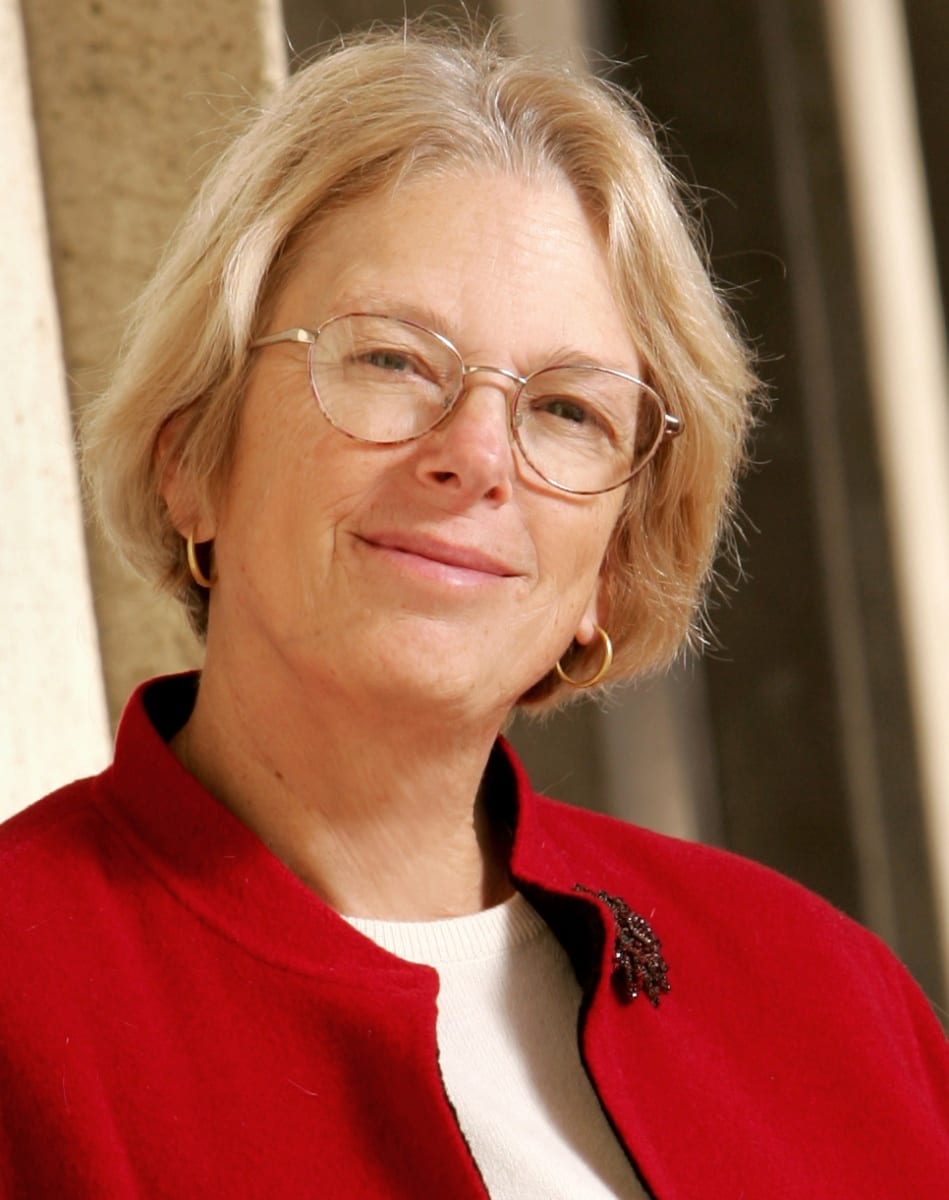
Samuelson skräder inte orden gällande hur dåligt utformad lag artikel 13/17 verkligen är, med katastrofala följder inom allt från medborgerliga rättigheter till konkurrensmöjligheter inom den digitala ekonomin.
”Article 17 is internally contradictory, deeply ambiguous, harmful to small and medium-sized companies as well as to user freedoms of expression, and may well be invalid for violating the European Charter of Fundamental Rights.”
Pamela Samuelson om artikel 17 i det europeiska upphovsrättsdirektivet
Det stora motståndet mot direktivet
Samuelson betonade tydligt hur stort motståndet mot direktivet verkligen var genom att lyfta hur många civilsamhällesorganisationer som motsatte sig det, det stora motståndet bland forskare och inte minst de hundratusentals som demonstrerade på gatorna och miljonerna på internet.
”More than 145 civil society organizations expressed opposition to adoption of the precursor to Article 17, and more than 5 million individuals signed a petition against it. Many European scholars criticized the proposed provision because, among other things, this new strict liability regime would undermine fundamental freedoms of expression and access to knowledge and culture. A coalition of 240 EU-based online businesses wrote a letter asking members of the EU Parliament to reject this strict liability rule because of the financial and operational burdens necessary to implement filtering systems, inaccuracies of current technologies, and the lack of protection for small and medium-sized enterprises.”
Pamela Samuelson
Direktivets kompromisser
Samuelson berättar om de stora vinster som gjordes under striden om artikel 17. Hon kontrasterar de tidigare versionerna av direktivet med den slutgiltiga och listar sju begränsningar av filterkraven som introducerades för att kompromissa med oss motståndare till direktivet:
- Proportionalitetskrav
- Plattformar tvingas bara filtrera material som de har fått information om från upphovsrättsindustrin
- Detaljerade krav på att användare ska kunna överklaga censur av deras uppladdningar
- Filtreringarna ska inte påverka vår möjlighet att dela med oss av lagliga verk
- Undantag för vissa startups
- Undantag för icke-vinstdrivande encyklopedier, kod-delningssidor och utbildningsbanker
The revisions to Article 17 reflects the Commission’s recognition that these new rules pose a greater risk to fundamental rights than it previously acknowledged.
Pamela Samuelson
Direktivets självmotsägelser
Samuelson går sedan vidare och pekar ut fyra sätt på vilka artikel 17 är tydligt självmotsägande: (1) gällande användarnas friheter, (2) krav på övervakning, (3) licenskrav och (4) skydd av personlig information. Hon ser inget sätt på vilket dessa självmotsägelser egentligen ska kunna lösas.
Article 17 is inherently contradictory in four respects: about user freedoms, general monitoring, licensing obligations, and personal data protection. It is difficult to imagine how these contradictions could possibly be resolved through EU member state legislation.
Pamela Samuelson
(1) Automatiska filter kan inte förstå den kontext som avgör ifall uppladdningar är lagliga eller inte. De kan därför inte respektera användarnas friheter till att t.ex. publicera satir, oavsett om artikel 17 kräver att de ska göra det.
The inability of these technologies to understand context was made clear during two of the stakeholder dialogue meetings that featured presentations and discussions about filtering technologies, including by representatives of YouTube and Facebook, among others. As an Audible Magic representative stated: “ Copyright exceptions require a high degree of intellectual judgment and an understanding and appreciation of context. We do not represent that any technology can solve this problem in an automated fashion. Ultimately these types of determinations must be handled by human judgment.” Other speakers at these dialogue sessions also attested that their technologies did not consider context. Yet “as long as filtering technology cannot determine if a use is covered by an exception or not then it does not meet the requirements established by Article 17 of the Directive.” This contradiction is baked into Article 17. A user upload of a parodic video that used a clip from a movie to make fun of one of its characters, for instance, would be blocked by automated content recognition technologies, even if the parody was lawful under EU law.
Pamela Samuelson
(2) Artikel 13/17 kräver alltså filter för uppladdningar till nätplattformar, vilket innebär att de måste utöva generell övervakning av användarnas beteende, vilket är förbjudet av e-handelsdirektivet. Att förbudet mot generell övervakning trumfar krav på filtrering för att stoppa upphovsrättsintrång har EU-domstolen tidigare tydligt fastslagit i SABAM vs NetLog.
…insofar as Article 17 requires the use of automated content recognition technologies, Article 17 conflicts with Article 15 of the E-Commerce Directive.
Pamela Samelson
(3) Det är omöjligt från plattformar att avtala om de licenser som direktivet kräver att de ska avtala om.
A third contradiction arises from Article 17’s unrealistic requirement that online sharing sitesmake “best efforts” to get authorization for user-uploaded contents through licensing. There are literally billions of in-copyright works of all kinds on the Internet and billions of creators who own rights in those works. It is simply impossible for service providers to get authorization from all of the creators of these works.
Pamela Samuelson
Hur ska någon kunna förhanlda om licenser med miljarder olika kreatörer vars material hamnar på internet?
How can license terms successfully be negotiated with the billions of creators whose content is on the open Internet? Collecting societies in the EU, as well as large EU-based rights holders, may be eager to grant licenses to ISPs. Article 17 certainly provides them with leverage to make sure that licenses are granted only on their preferred terms. However, the stakeholder dialogue meetings have made clear that not all rights holders w ant to grant licenses. Moreover, it will be exceedingly expensive for ISPs to negotiate licenses with all prospective licensees because in virtually every member state of the EU there are specialized collecting societies that represent different types of rights holders (e.g., composers, photographers, text authors). Each of these societies (except in certain Nordic countries) represents only those rights holders who are members, not those creators who have chosen not to join. Google and Facebook may be able to enter into licensing arrangements with all of these societies and with major content industry firms who are not represented by collecting societies. However, small and medium-sized enterprises are unlikely to be able to negotiate licenses with all of these rights holders.
Pamela Samuelson
(4) Uppladdningsfiltren måste hantera personuppgifter, trots att artikel 17 förbjuder det.
A fourth contradiction implicitly embedded in Article 17 concerns personal data. Article 17 states that it “shall not lead to any identification of individual users nor to the processing of personal data” except in accordance with EU law. However, as the CJEU recognized in Netlog, automated content recognition technologies are designed to generally monitor user contents on ISP hosting sites, which “involve[s] the identification, systematic analysis and processing of information connected with [user] profiles . . . [which] is protected personal data because, in principle, it allows those users to be identified.”
Interference with users’ personal data rights was one of the bases on which the CJEU denied SABAM’s requested filtering injunction in Netlog. The Commission has yet to explain its theory about why Article 17 is compatible with the General Data Protection Regulation.
Pamela Samuelson
Vem ska egentligen filtrera?
Dessutom är upphovsrättsdirektivet väldigt otydligt med vilka som omfattas av kraven på uppladdningsfilter. Samuelson påpekar att t.ex. Tinder skulle kunna vara ansvariga ifall användarna använder andras foton som profilbilder och att en sida som Ravelry, där användare delar med sig av stickningsmönster, kan tvingas filtrera eventuella intrång i skyddade mönster. Situationen blir snabbt absurd när man inser bredden av hur många olika saker som kan utgöra intrång i någons upphovsrätt, och hur många saker som är skyddade av upphovsrätten.
As applied to US companies, it is hard to know whether the Article 17 mandates would apply to dating services such as Tinder, image-sharing services such as Imgur, commentary sites such as Reddit, news sites that allow user comments such as TechDirt, knitting share sites such as Rave lry, real estate sites such as Zillow, website hosts such as WordPress.com, or personal profile and influencer blog sites such as Tumblr.
Pamela Samuelson
Direktivet stärker Big Techs ställning
Samuelson är väldigt tydlig med hur artikel 17 kommer skada mindre företag. De har inte råd med filtren, de har inte råd med licenserna och de har inte råd att inte veta ifall de måste ha filter eller inte. Dagens stora nätföretag har dragit stor nytta av att inte göras ansvariga för sina användares enskilda upphovsrättsintrång och är därför i en situation idag där de kommer styra vilken nivå av filtrering som krävs av artikel 17 (branschstandard). Denna nivå kommer de göra dyrare än några konkurrenter har råd med.
YouTube and Facebook greatly benefited in their early years from the existence of the DMCA and the EU’s E-Commerce safe harbors to become dominant platforms. Now that they are dominant players, they could benefit further from Congress changing the rules in a way that would pull the ladder up behind them. Imposing Article 17-like obligations on US-based ISPs would create the very kinds of entry barriers that Congress sought to avoid in 1998.
Pamela Samuelson
EU policymakers are either unworried about erecting these kinds of entry barriers or oblivious to the impacts that Article 17 and similar rules will have on competition and innovation in online content hosting markets. The goal of Article 17 seems to be for EU rights holders to extract rents from existing US-based mega-platforms, not to provide incentives for new EU-based platforms to compete with the mega-platforms or innovate around them.
Julia Reda
>Julia Reda är forskare vid Berkman Klein Center, Harvard, där hon forskar på hur akademisk forskning kan bli öppnare. Hon var mellan 2014 och 2019 EU-parlamentariker för det tyska Piratpartiet och jobbade då väldigt mycket med upphovsrättsdirektivet. Hon var bland annat parlamentets rapportör vid utvärderingen av InfoSoc-direktivet, den tidigare regleringen av upphovsrätt i EU. Du kan läsa hela Julia Redas vittnesmål här.
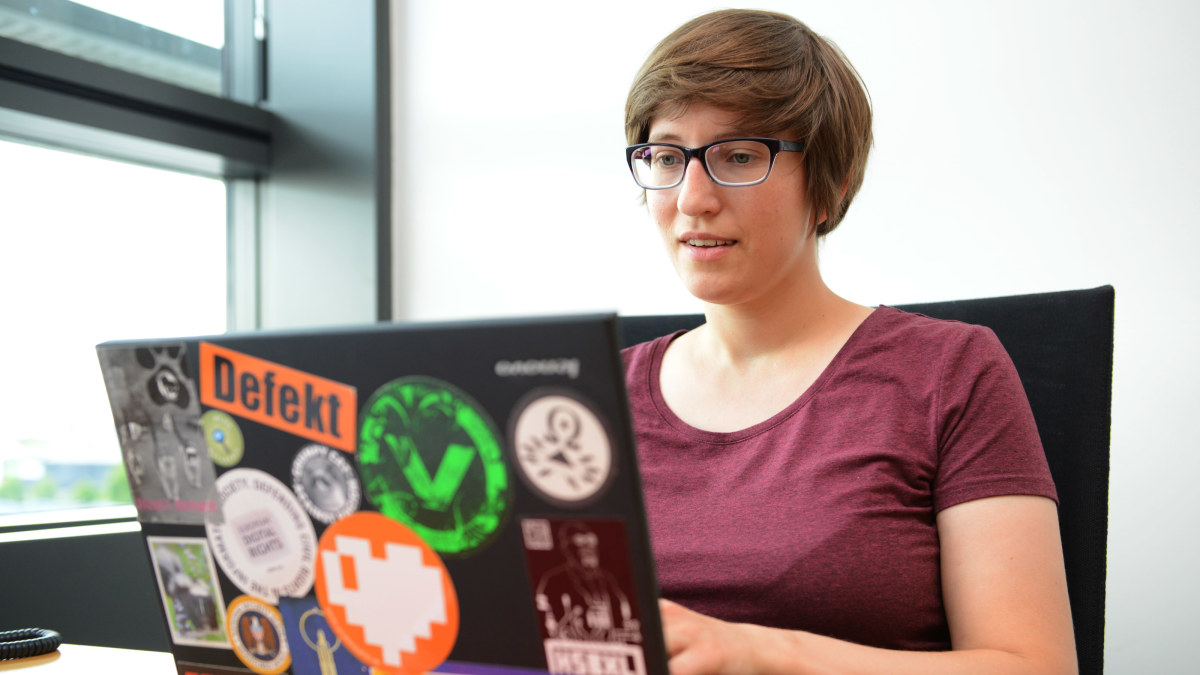
Bakgrunden till direktivet – en konflikt mellan två branscher
Julia beskrev hur bakgrunden till upphovsrättsdirektivets artikel 13/17 till stor del var en förhandlingskonflikt mellan skivbolagen och nätplattformarna. Dessa har sedan tidigare avtalat om licenser som tillåter skivbolagens musik att spelas på t.ex. Youtube mot en viss ersättning från Youtubes ägare Google. Skivbolagen var missnöjda med ersättningens storlek och ville använda EU som hävstång för bättre avtal.
The primary objective of Article 17 is economic regulation. It intervenes in the contractual relationship between platform operators and rightsholders to encourage the agreement of licenses for copyrighted content uploaded by users of those platforms, and to achieve higher license payments from platform operators to rightsholders. Article17’s primary goal is not the reduction of copyright infringement, but the transfer of value from certain online platforms to rightsholders. Most entertainment industry sectors have successfully adapted to the digital environment, for example by offering affordable and easy-to-use subscription models, and are experiencing growth. A study by the European Commission concluded in 2015, before the proposal for the DSM Directive was published, found no link between copyright infringement and sales of legitimate copyrighted content in the EU in most sectors. The proposal for Article 17 followed complaints from music industry representatives over the discrepancy between license payments from user-generated content platforms such as YouTube on the one hand and licensed services on the other hand. Article 17 was introduced to interfere in the marketrelationship between platforms and rightsholders to improve the rightsholders bargaining power.
Julia Reda om bakgrunden till artikel 13/17
Vilka krav ställer direktivet på plattformar?
Direktivet kräver att plattformar ska uppfylla tre stycken krav:
- De ska försöka avtala om licenser från upphovsrättsindustrin.
- De ska blockera upphovsrättsskyddat material från att laddas upp när rättighetshavaren identifierat verket en gång.
- Om de informerats om att en uppladdning bryter mot en rättighetshavares upphovsrätt ska den tas bort och framtida uppladdningar som bryter mot samma upphovsrätt ska förhindras.
According to Article 17, Online Content Sharing Service Providers are directly liable for copyright infringements committed by their users, unless they can showthey have made best efforts to fulfil three cumulative obligations: 1.To seek license agreements from rightsholders. 2. To block the upload of copyrighted material once a rightsholder has provided the platform with information identifying the work, such as a fingerprint. 3. Once having been informed by a rightsholder of an infringement occurring on their services, to remove it and prevent the infringing content from being re-uploaded
Julia Reda
Vad innebär licenskravet?
Vad kravet på att söka licenser för verk som laddas upp till plattformar egentligen innebär är oklart. Framför allt eftersom det är omöjligt att söka licenser för alla verk som potentiellt skulle kunna laddas upp till ens plattform vid någon tidpunkt i framtiden. Det juridiska ansvaret för ett eventuellt upphovsrättsintrång inträder ju direkt vid uppladdningen, så att en licens måste ha sökts innan plattformen kunde veta att någon ville ladda upp materialet.
The obligation to make best efforts to seek licenses for all user-uploaded content is very unclear, given that it is impossible to seek licenses in advance for all works that could potentially be uploaded in the future, but liability applies as soon as a work becomes available. In order to avoidliability, Article17 requires a platform operator to demonstrate that it has made best efforts to obtain a license before a work is even uploaded, which is theoretically impossible, because the platform operator does not know which works users will upload.
Julia Reda
Slutsatsen blir alltså att plattformar måste licensiera allt material alltid, eftersom man inte kan veta vad någon användare får för sig att ladda upp i framtiden. Men hur ska man kunna göra det? En bra fråga som direktivet inte svarar på, och som partssamtalen kring implementationen inte kommit till.
While the US has a copyright register for domestic works, there is no global comprehensive register of copyrighted works that platform operators could consult. Therefore, platforms cannot ascertain who the rightsholders in the user-uploaded works are. They have to rely on the statements of uploaders or those who approach them claiming to be rightsholders. False copyright claims are ubiquitous and many user uploads come without any copyright information whatsoever. This can be illustrated with a simple example. A user uploads a photograph that a friend of theirs has taken as their profile picture on Facebook. The user is not the copyright holder in the photograph, their friend is. Most likely, they will have not concluded a licensing agreement about the use of the picture, nor agreed a transfer of ownership. According to Article 17, Facebook is now liable for the copyright infringement by the user, who has uploaded their profile picture without permission from the rightsholder, unless Facebook can show that it has made best efforts to obtain a license from the rightsholder. Facebook has no way of knowing who that rightsholder is, so it can not approach them for a license negotiation. Even if it did know the rightsholder, the transaction costs of individual license negotiations for each upload would be prohibitively expensive.
Julia Reda
Julias exempel med att använda sin kompis foto som profilbild på Facebook illustrerar otroligt tydligt dumheten i artikel 13/17.
Även om man begränsar licensieringskravet från att omfatta alla rättighetshavare till att det räcker med att ha avtal med de stora kollektiva licensieringsorganen så blir det orimligt dyrt för alla utom de största aktörerna.
The costs of negotiating licensing agreements with the hundreds of national collecting societies that exist within the EU will be prohibitively expensive for all but the largest online platforms, further entrenching their market power
Julia Reda
Direktivets rävsax för nätföretag
Direktivet ställer alltså å ena sidan krav på att plattformar ska stoppa uppladdningar av upphovsrättsskyddat material. Detta leder till att man måste använda filter. Filter som uppfyller lagens krav finns dock inte, vilket alltså innebär att plattformar som använder dem bryter mot lagens krav på att respektera användarnas rättigheter.
Redan idag är det ju så att människors nätvardag begränsas av dåliga filter, som ofta stoppar helt lagliga uppladdningar.
Copyright filters routinely block content uploaded by the original copyright holder after a wrongful copyright claim by a third party. For example, a man who played a piano piece by Bach that is in the public domain and uploaded it to Facebook had his performance disabled because Facebook’s (likely automated) copyright enforcement process attributed it to Sony Music.
Julia Reda
Om plattformar går andra vägen och inte använder dessa filter så ställs de inför ett stort juridiskt ansvar för användarnas eventuella upphovsrättsintrång och därmed potentiella miljon- eller till och med miljardskadestånd.
Man kan nästan undra ifall tanken med direktivet helt enkelt är att göra det juridiskt omöjligt att bedriva plattformar med öppen uppladdningsfunktion för vanliga människor.
“We all have legal obligations to fulfill. If you have a massive platform like YouTube you will have to use a technological solution. Everyone has these obligations. They have created a business model with the property of other people – on copyright protected works. If the intention of the platform is to give people access to copyright protected works then we have to think about whether this kind of business should exist.”
Axel Voss, en av de ansvariga för upphovsrättsdirektivet
Julia förklarade den här rävsaxen tydligt i sitt vittnesmål:
Even the most advanced, most expensive filtering systems are not without flaws, and they systematically fail when faced with wrongful copyright claims or legal uses under exceptions and limitations. For many types of copyrighted material other than sound recordings or videos, no filtering technologies are available. Platform operators are faced with the decision to either use the costly, insufficient and error-prone filters available on the market, thereby violating their legal obligations towards users, or not to use them and face strict liability for all users’ copyright infringements, because they have failed to make best efforts to block them.
Julia Reda
Julia Reda har arbetat med upphovsrättsdirektivet längre än nästan någon annan, och hon har nyligen annonserat att hon snart kommer tillbaka till Europa från USA, och att hon då ska arbeta med implementeringen av direktivet i EU:s olika medlemsstater.
